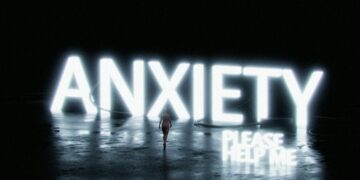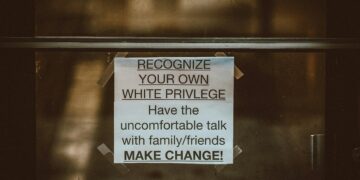Table of Contents
I am a therapist and researcher.
For two decades, I have dedicated my professional life to understanding the intricate landscapes of the human mind—the hidden pathways of trauma, the subtle topographies of emotion, and the complex weather systems of the nervous system.
My shelves are lined with textbooks on neurobiology, my days filled with helping others navigate their own internal wilderness.
I was, by all accounts, a guide who knew the map.
And yet, for years, I was hopelessly lost in my own territory.
My personal reality was a jarring, painful dissonance.
While I spoke to clients about resilience, my own body was besieged by a relentless cycle of chronic pain.
It started as a low, aching hum in my lower back, a ghost of an old injury that decided to take up permanent residence.
Soon, it was joined by migraines that would descend like sudden thunderstorms, leaving me incapacitated for days.
The pain was a physical fact, but it brought with it a shadow companion: a constant, low-grade hum of anxiety that became the background noise of my life.1
I remember one particular afternoon with a clarity that still feels sharp.
The pain in my back had flared into a searing rage, and I found myself on my hands and knees at the bottom of the staircase in my own home, unable to stand.
The simple act of climbing to my bedroom felt like scaling a mountain.
As I crawled up each step, shame and frustration burned hotter than the pain itself.
I was a man who helped others find their footing, and I couldn’t even stand up in my own house.2
In those moments, lying on the floor, I would feel a surge of envy so potent it was nauseating—envy for people who could simply walk, who could stand and make a sandwich without a strategic plan, whose bodies weren’t a constant negotiation.2
My life became a fortress built to defend against these twin invaders.
I avoided social gatherings, fearing a migraine.
I stopped enjoying long walks, fearing the inevitable backlash from my spine.
My world, once expansive, had shrunk to the size of what I thought my body could handle.
The pain and anxiety were no longer separate entities; they were a single, self-sustaining creature, a perfect, vicious loop.
The anxiety tensed my muscles, which amplified the pain.
The pain, in turn, screamed danger signals to my brain, which fueled the anxiety.3
I was trapped.
And the most terrifying part? I, the supposed expert, had no idea how to get O.T.
The Barren Landscape: A Tour of Failed Treatments
My journey through the conventional medical system was a long, frustrating pilgrimage from one specialist’s office to another.
It was a cycle of hope and disappointment that repeated until I felt worn smooth by the process.
I tried it all.
Physical therapy, where well-meaning practitioners gave me exercises that sometimes seemed to provoke the pain rather than soothe it.
A series of epidural steroid injections that offered a few weeks of blessed, muted quiet before the familiar roar of pain returned.
And the medications—a litany of pills that promised relief but delivered a host of “nasty side effects” that often felt as debilitating as the pain itself.2
Each failure was not just a physical setback; it was an emotional one.
It reinforced the narrative that my body was broken, that I was a lost cause.
I felt profoundly let down, not by any single doctor—they were skilled, good people—but by the system itself, a system that seemed to view my body as a car with faulty parts.
The neurologist addressed the migraines, the orthopedist focused on the spine, and the psychiatrist prescribed medication for the anxiety.
No one seemed to see that the entire engine was on fire.6
The Science of a Vicious Cycle
What I knew in theory but was now experiencing in my flesh was the profound, bidirectional link between the mind and the body.
When you are under constant stress—and chronic pain is a significant, relentless stressor—your brain activates the sympathetic nervous system, our ancient “fight or flight” mechanism.3
This triggers a cascade of hormonal responses, flooding the body with cortisol and adrenaline.4
In the short term, this is a lifesaver.
It primes you to escape a threat.
But when the “threat” is your own body and it never goes away, this system becomes chronically activated.
The consequences are devastating:
- Amplified Pain Signals: Chronic stress makes the brain more sensitive to pain. Neurotransmitters like serotonin and norepinephrine, which help regulate both mood and pain, become imbalanced. The result is that even minor aches can feel severe, a phenomenon known as central sensitization.3 Your body’s alarm system becomes hyper-reactive, screaming “burglar” when it’s just the wind.9
- Constant Muscle Tension: Anxiety causes muscles to tense up as a protective reflex. Over time, this chronic tension leads to its own pain—stiffness, tension headaches, and trigger points that feed back into the original pain cycle.4
- Weakened Healing: The constant flood of stress hormones suppresses the immune system, impairing the body’s ability to repair itself. This can slow healing from injuries and worsen inflammatory conditions like arthritis or fibromyalgia.3
- Disrupted Sleep: Anxiety and pain are notorious thieves of sleep. Yet, poor sleep lowers your pain threshold and diminishes your ability to cope, creating another vicious feedback loop.3
This physiological storm is why so many conventional treatments fall short.
A physical therapist can work on a muscle, but they can’t stop the flood of cortisol that’s keeping it clenched.
An injection can temporarily block a pain signal, but it can’t recalibrate the hyper-sensitized nervous system that’s amplifying it.
The treatments were targeting the smoke, not the fire.
The Limits of a Top-Down Approach
As a therapist, my most trusted tool was Cognitive Behavioral Therapy (CBT).
It’s a cornerstone of modern psychotherapy, designed to help individuals identify and reframe the negative thought patterns that fuel distress.11
I diligently applied it to myself.
I challenged my “catastrophizing” thoughts about the pain.
I told myself, “This sensation is not dangerous.” I tried to reason my way out of the anxiety.
And on some level, it helped.
But it was like trying to shout logical instructions into a hurricane.
My body was screaming a different story.
The pain was a primal, physiological reality that no amount of reframing could fully silence.
This is a common and profound limitation of purely cognitive approaches when dealing with deeply embodied states.13
You can’t simply “out-think” a nervous system that is convinced it is under mortal threat.
The experience felt deeply invalidating; my rational mind was telling me I was safe, while every cell in my body was preparing for war.
This disconnect is a familiar story for millions.
Studies show that up to 85% of people with chronic pain also suffer from severe depression or anxiety.3
Yet the treatments remain siloed.
Pain clinics focus on the body, mental health services on the mind, and patients are left to shuttle between them, feeling like their experience is being fractured and misunderstood.14
This fragmentation isn’t just inefficient; it actively perpetuates the pain-anxiety loop by failing to address the true root of the problem: a system-wide dysregulation.
I was living proof of this systemic failure, and it left me feeling utterly hopeless.
The Epiphany: Discovering the Trophic Cascade
At my lowest point, I felt like a failure on every level—as a man, a husband, a therapist.
My professional tools were useless, my body felt like a prison, and my hope had withered.
It was in this state of intellectual and emotional surrender that I stumbled upon something that would change everything.
It wasn’t in a medical journal or a psychology textbook.
It was an article in an ecology magazine about the reintroduction of wolves to Yellowstone National Park.
As I read, a profound sense of recognition washed over me.
The story of that ecosystem felt, with an almost shocking intimacy, like the story of my own body.
The Ecological Revelation
The article described a concept I had never encountered before: a “trophic cascade”.16
It’s a powerful ecological principle that describes how the removal or addition of a single “keystone species”—often an apex predator—can trigger a domino effect that ripples through every level of an ecosystem, fundamentally altering its structure and function.18
- The Collapse: The story of Yellowstone began with a collapse. In the 1920s, the last wolf packs were eliminated from the park. This wasn’t just the loss of a single species; it was the removal of the ecosystem’s primary regulator. Without the wolves, the elk population, their main prey, exploded. Herds of elk congregated in the valleys, overgrazing the willows and aspens until the riverbanks were bare.20 This wasn’t just a problem for the trees. The loss of vegetation led to soil erosion, which literally changed the course of the rivers. Without the trees, the songbirds had nowhere to nest. Without the willows, the beavers had nothing to eat, so they vanished. Without the beaver dams, habitats for otters, muskrats, and fish disappeared. The entire ecosystem had become “downgraded,” a fragile, impoverished version of its former self, dominated by a single, out-of-control element.22
- The Rewilding: Then, in 1995, scientists reintroduced wolves to the park. What happened next was nothing short of miraculous. The trophic cascade began to flow in reverse. The wolves didn’t just kill some elk; their very presence—the “landscape of fear” they created—changed the elk’s behavior.23 The elk started avoiding the open valleys and riverbanks where they were most vulnerable. And with that pressure lifted, the landscape began to heal. The willows and aspens grew back, lush and tall. The songbirds returned. The resurgent willows provided food for beavers, who also returned. The beavers built dams, creating ponds and wetlands that became thriving habitats for a host of other species. The regenerating forests stabilized the riverbanks, reducing erosion. The wolves had, in essence, changed the rivers themselves.22 The reintroduction of a single keystone species didn’t just fix one problem; it allowed the entire ecosystem to self-organize back into a state of vibrant, resilient health. A “rich seam of life took hold and flourished”.22
The Keystone Species of the Human Body
Reading this, I felt a jolt of understanding so powerful it was physical.
My body wasn’t a broken machine.
It was a collapsed ecosystem.
The pain and anxiety weren’t the core problem; they were the “overgrazing elk,” the symptoms of a system that had lost its keystone species.
I wasn’t fighting a disease; I was living in the midst of a biological trophic cascade.
- The Keystone Species: I realized that the “apex predator” of our internal ecosystem is a regulated nervous system. This is the state of being governed by what Dr. Stephen Porges’ Polyvagal Theory calls the ventral vagal complex of the vagus nerve.25 It is our biological state of safety, connection, and social engagement. When this system is online, our bodies are primed for health, growth, and restoration. It is our natural, resilient foundation.26
- The “Removal” Event: An injury, a period of intense stress, a traumatic event—these are the ecological equivalents of removing the wolves. They knock our nervous system out of that safe, regulated state and plunge it into a state of chronic threat. The “keystone species” of safety is gone, and the system shifts into the defensive modes of fight, flight, or freeze.27
- The “Ecosystem Collapse”: This chronic threat state is the trophic cascade in the body. The “exploding elk population” is the over-activated stress response: the flood of cortisol and adrenaline, the chronic muscle tension, the systemic inflammation.3 The “eroding riverbanks” are the downstream consequences: digestive issues like IBS, a weakened immune system, disrupted sleep patterns. And the anxiety? That’s the constant, fearful vigilance of the entire ecosystem, the feeling of being prey in a world without a predator to create balance—a world where the threat is everywhere and nowhere.
This analogy fundamentally reframed my entire understanding.
Ecologists discovered that it wasn’t just the direct killing of prey by predators that shaped the landscape; it was the fear of predation.23
Frightened animals behave differently.
They avoid certain areas.
They are hypervigilant.
They eat less.
This “landscape of fear” reshapes the entire environment.
In the world of chronic pain, we have a name for this: “fear-avoidance behavior” and “pain catastrophizing”.29
They are two of the biggest predictors of long-term disability.
We avoid movements we fear will cause pain, which leads to deconditioning, weakness, and more pain.
We ruminate on the worst possible outcomes, which floods our system with more stress hormones and amplifies our pain perception.
We were seeing this as a psychological flaw, a “maladaptive cognition.” But the trophic cascade analogy revealed it for what it truly is: a natural, adaptive survival response of an organism living in a high-threat environment.
My body wasn’t failing; it was adapting perfectly to a world it perceived as profoundly unsafe.
The New Paradigm: A Systems Approach to Healing
This epiphany was the beginning of my own rewilding.
It gave me a new map, one based not on fighting symptoms but on restoring the fundamental health of the ecosystem.
I stopped trying to fix my broken parts and started asking a different question: How do I reintroduce the keystone species of safety back into my own nervous system?
This question led me to a new paradigm for healing, one built on three core principles that stand in stark contrast to the mechanical view that had failed me for so long.
| The Old Map (Mechanical View) | The New Territory (Ecosystem View) |
| The Problem: A broken part (e.g., bad disc, chemical imbalance). | The Problem: A dysregulated system (a collapsed ecosystem). |
| The Symptoms: Pain and anxiety are the enemy to be defeated. | The Symptoms: Pain and anxiety are signals/indicators of system state. |
| The Goal: Eliminate pain, eradicate anxiety (symptom reduction). | The Goal: Restore resilience and regulation to the system (habitat restoration). |
| The Method: Isolate and fix the part (medication, surgery, talk therapy). | The Method: Create the conditions for the whole system to self-reorganize. |
| Your Role: Passive recipient of treatment. | Your Role: Active participant in “rewilding” your own nervous system. |
Principle 1: Stop Attacking the Elk, Restore the Wilderness
My entire approach to my own suffering had been a war on symptoms.
I was trying to manage the “elk”—to medicate the pain, to rationalize the anxiety.
It was an exhausting, unwinnable battle.
The ecological perspective made it clear: the problem wasn’t the elk, but the absence of the wolf.
The solution wasn’t to cull the herd, but to restore the predator that brings balance to the entire system.
In human terms, this means shifting our focus from symptom management to nervous system regulation.
The goal is not to eradicate pain or anxiety, but to restore the system’s capacity for resilience, to re-establish the “ventral vagal” state of safety as its default setting.
When the ecosystem is healthy and balanced, the “elk” (the symptoms) take care of themselves.
They find their natural, manageable level.
This is a radical departure from the conventional model.
It asks us to see our symptoms not as enemies to be vanquished, but as ecological indicators.
A racing heart, a clenched jaw, a spike in pain—these are not failures.
They are simply signals telling us which state our nervous system is in.
They are the rustling in the leaves that tells us the “threat” system is active.
By learning to read these signals without fear, we can begin to consciously guide our system back toward the safety of the ventral vagal state, effectively “reintroducing the wolf” moment by moment.
Principle 2: The Brain as a Weather System, Not a Broken Radio
The old view of chronic pain often treats the brain like a broken radio, stuck broadcasting a pain signal from a damaged part of the body.
If we can just fix the part or turn down the volume with medication, the problem will be solved.
But this model fails to explain why pain often persists long after tissues have healed.29
The systems view sees the brain differently: not as a simple machine, but as a complex, adaptive weather system.31
Neuroplasticity is the principle that this system can change, reorganizing its own structure and function in response to experience.32
Unfortunately, it can learn maladaptive patterns just as easily as helpful ones.
Chronic pain is often the result of this “unhelpful neuroplasticity”.33
Through a process called central sensitization, the nervous system becomes progressively more sensitive.
Neurons that fire together, wire together.
With every pain experience, the neural pathways for pain become stronger, faster, and more easily triggered.
Eventually, the brain learns to be in pain.
It gets so good at producing the pain signal that it no longer needs a significant input from the body to do so.
Sensations that should be harmless—the touch of bedsheets, a gentle stretch—are now interpreted as threatening and translated into pain.8
This process is driven by one of the brain’s most fundamental functions: prediction.
The brain is constantly building a model of the world and predicting what will happen next, based on past experience.
In the context of chronic pain, the brain develops a strong “prior belief” that the body is damaged and vulnerable.31
It starts to predict pain, and because the brain’s predictions have a powerful influence on our perception, this becomes a self-fulfilling prophecy.
It generates the experience of pain to match its prediction, even in the absence of new injury.
From the perspective of chaos theory, the brain has become stuck in a stable but pathological “attractor state”.34
Like a river carving a deep canyon, the patterns of pain and anxiety have become the default, easiest path for neural activity to follow.
To change this, you can’t just nudge the river.
You need a significant “perturbation”—an event powerful enough to disrupt the old pattern and allow the system to reorganize around a new, healthier attractor state of safety.31
Principle 3: The Body is the Landscape
For years, I had lived almost entirely in my head, treating my body as an inconvenient, broken object that my mind had to manage.
The final, crucial piece of the puzzle was the realization that the mind could not solve this alone.
The “ecosystem” wasn’t a metaphor; it was my physical, feeling body.
The landscape itself held the key to its own rewilding.
This is the core insight of somatic (body-based) therapies.
Somatic Experiencing (SE), developed by Dr. Peter Levine, posits that trauma is not in the event itself, but in the unresolved survival energy that gets trapped in the nervous system.27
When we face a threat and our instinctive responses to fight or flee are thwarted, the nervous system defaults to its most primitive defense: freeze.
The body becomes immobile, but the immense energy mobilized for survival has nowhere to go.
It remains locked in the system, keeping the body’s internal alarm bells ringing indefinitely.27
The solution, therefore, must be “body-first.” Instead of trying to convince the mind that it is safe, we must provide the body with direct, felt experiences of safety.
Somatic approaches work from the bottom-up.
They gently guide our attention to our internal bodily sensations—what therapists call interoception—and help us develop the capacity to tolerate them without being overwhelmed.38
By creating a safe container, these therapies allow the body to finally complete its thwarted self-protective responses, discharging the trapped energy through natural mechanisms like trembling, shaking, or deep, spontaneous breaths.
These three principles form a nested, integrated whole.
Healing begins with Principle 3, by turning our attention to the physical landscape of the body.
This “body-first” approach provides the direct, sensory data needed to enact Principle 2, giving the brain the new, safe information required to update its predictive models and rewire its neural pathways.
This process of providing new data from the body is the “destabilizing perturbation” that allows the entire system to shift.
And as the brain rewires for safety, we achieve Principle 1: the keystone species of regulation is reintroduced, and the entire ecosystem of the self can begin its journey back to a state of dynamic, resilient health.
This is not a war on pain.
It is a homecoming to the body.
The Rewilding Toolkit: A Field Guide to Reclaiming Your Inner Wilderness
Understanding the paradigm shift is the first step.
The next is to put it into practice.
What follows is not a set of rigid instructions to be perfected, but a field guide for exploration.
Think of yourself as a naturalist, learning to tend to your own inner landscape.
The goal is not to force the wilderness into submission, but to create the conditions for it to thrive.
These are practices for cultivating safety, charting new neural pathways, and allowing your system’s natural, wild intelligence to re-emerge.
Section 1: Reintroducing the Keystone Species (Vagal Toning)
The foundation of rewilding is re-establishing safety.
The ventral vagal nerve is the physiological pathway for this state of calm and connection.
These exercises are designed to gently “tone” this nerve, like exercising a muscle, making it easier for your system to access a state of regulation.
- Deep, Rhythmic Breathing: This is the most direct and accessible tool for shifting your nervous system state. The key is to make your exhale longer than your inhale, which directly stimulates the vagus nerve and activates the parasympathetic “rest and digest” system.25
- The Practice: Sit or lie down comfortably. Place a hand on your belly. Inhale gently through your nose for a count of four, feeling your belly expand. Hold the breath gently for a count of four. Exhale slowly and completely through your mouth for a count of six, as if you’re breathing out through a straw. Feel your belly soften. Repeat for 2-5 minutes.
- Vocal Toning: The vagus nerve passes through your throat and is connected to the vocal cords. Using your voice, especially with low-frequency vibrations, is a powerful way to stimulate it.39
- The Practice: Find a comfortable spot. Take a gentle breath in. On the exhale, make a low-pitched “voooooo” sound, like a foghorn. Feel the vibration in your chest and throat. You can also try humming a simple tune or even gargling with water for 30 seconds. The goal is the physical vibration.
- The Basic Exercise (Porges): Developed by the originator of Polyvagal Theory, this simple exercise helps to release tension in the suboccipital muscles at the top of the spine, an area rich with nerve receptors that signal safety or danger to the brainstem.40
- The Practice: Lie on your back with your knees bent and feet flat on the floor. Clasp your hands and place them behind your head, cradling it. Let the weight of your head rest in your hands. Without moving your head, shift your eyes to look as far to the right as you can. Hold them there for 30-60 seconds. You are waiting for a physiological sign of release, like a swallow, a yawn, or a sigh. Once that happens (or after 60 seconds), bring your eyes back to the center. Rest for a moment. Then, repeat on the other side, shifting your eyes to the left.
Section 2: Charting New Rivers (Neuroplasticity in Action)
Your brain learned the pathways of pain and anxiety.
With these practices, you can help it learn new pathways of safety and ease.
This is about providing your brain with new, undeniable evidence that it can feel something other than threat.
- Somatic Tracking: This is the core practice of Pain Reprocessing Therapy (PRT). The goal is to observe a sensation with curiosity and neutrality, stripping away the layer of fear that turns a simple sensation into suffering.42
- The Practice: Find a comfortable, seated position. Bring your attention to the sensation of pain or discomfort in your body. Instead of resisting it, get curious. Is it sharp or dull? Hot or cold? Does it vibrate or pulse? Is it constant or does it change? Observe it as you would a cloud in the sky—a temporary, changing phenomenon. As you track the sensation, remind yourself with a sense of lightness: “This is just a sensation. My brain is creating this signal, but my body is safe.” The goal is not to make the pain go away, but to change your relationship to it from one of fear to one of safe observation.
- Graded Exposure to Movement: This practice directly counters the fear-avoidance cycle that keeps so many people trapped.29 You will teach your brain, step by tiny step, that movement is safe.
- The Practice: Choose a movement that you have been avoiding due to fear of pain (e.g., bending forward). Start ridiculously small. Maybe you only bend forward one inch. As you do it, pay close attention to the sensations. If you feel a twinge, use somatic tracking to observe it with curiosity. Reassure your brain: “See? That was okay. We are safe.” The next day, maybe you go two inches. The key is to stay below the threshold of a major pain flare-up. You are slowly and patiently expanding the map of what your brain considers safe territory.
- Cultivating Positive States: Neuroplasticity isn’t just about unlearning the negative; it’s about actively carving out and strengthening positive neural pathways. The more you use them, the more they become your brain’s new default.32
- The Practice: Make it a daily habit to intentionally engage in activities that foster positive emotions. This could be keeping a gratitude journal where you write down three specific things you were grateful for that day. It could be learning a new skill you enjoy, like painting or playing an instrument, which builds new neural networks unrelated to pain. It could be a “savoring” practice, where you take 30 seconds to fully absorb a pleasant moment—the warmth of the sun, the taste of your coffee, the sound of a bird.
Section 3: Releasing Stored Energy (Somatic Completion)
This is the deeper work of rewilding—allowing the ecosystem to discharge the old, pent-up energy from past threats.
This must be done gently, respecting the body’s own pace and wisdom.
- Titration and Pendulation: This is the cornerstone of Somatic Experiencing. It allows you to process difficult sensations and emotions in small, manageable doses, preventing the system from becoming overwhelmed.27
- The Practice: First, establish a “resource.” This is a place in your body, a memory, or an image that brings you a genuine feeling of calm, safety, or ease. It could be the feeling of your feet on the ground, the memory of a peaceful place in nature, or the image of a beloved pet. Get a clear sense of this resource. Then, for just a second or two, gently touch your awareness into a small piece of the difficult sensation or emotion (titration). Immediately after, guide your attention fully back to your resource, letting your nervous system settle and absorb the experience (pendulation). This back-and-forth rhythm allows the system to digest the difficult energy without flooding.
- Allowing Micro-Movements: Our bodies have an innate intelligence for releasing stored energy. Often, this manifests as small, involuntary movements that we have learned to suppress because we interpret them as signs of anxiety.27
- The Practice: In a quiet moment, simply sit and notice your body. If you feel an impulse to yawn, stretch, tremble, shake, or even just shift your posture, consciously allow it. Instead of tensing against it, soften and give it permission. See these movements not as symptoms to be controlled, but as your ecosystem’s natural, healthy process of self-regulation and discharge.
To make this practical, here is a simple plan to begin your own rewilding journey.
The key is consistency, not intensity.
| Day | Morning (5 mins) | Midday (2 mins) | Evening (10 mins) | Rewilding Focus |
| 1 | Deep Breathing (4-4-6) | Humming Break | Find a “Resource” (Somatic) | Establishing a Baseline of Safety |
| 2 | Deep Breathing | Humming Break | Resource & Pendulate to a tiny sensation | Gentle Exploration |
| 3 | Basic Exercise (Porges) | Gratitude Moment | Somatic Tracking of a neutral sensation | Vagal Toning & Mindful Awareness |
| 4 | Basic Exercise (Porges) | Deep Breathing | Graded Exposure: One safe, tiny movement | Building Trust in Movement |
| 5 | Deep Breathing | Humming Break | Somatic Tracking of a mild discomfort | Reappraising Sensation as Safe |
| 6 | Basic Exercise (Porges) | Gratitude Moment | Resource & Pendulate with a slightly larger sensation | Increasing Capacity |
| 7 | Deep Breathing | Deep Breathing | Full Body Scan (Mindfulness) | Integration and Rest |
Conclusion: A Thriving, Resilient Wilderness
My life today is not free of pain or anxiety.
Storms still roll through my internal landscape.
The difference is that my ecosystem is no longer fragile and degraded.
It is resilient.
The trees have grown back, the rivers run clear, and the keystone species of safety has returned to its rightful place.
I no longer live in fear of the “elk.” When I feel a twinge in my back or the familiar hum of anxiety, I don’t see it as a sign of brokenness.
I recognize it as a signal from my nervous system, a call to attend to my own wilderness.2
I have the tools to meet that signal with curiosity instead of fear.
I can use my breath to calm the storm.
I can track the sensation until my brain understands it is safe.
I can feel the solid ground of my own resilience beneath my feet.43
My shoulders and hips are loose for the first time I can remember.
I can walk for miles again, not out of grim necessity, but for the simple joy of it.
I can make a sandwich without pain seizing my back.
I laugh more.
My world, once shrunken by fear, has become expansive and rich with possibility again.2
This journey has taught me that healing is not a war to be won, but a wilderness to be tended.
It is not about achieving a state of perfect, static calm, but about cultivating a system that is dynamic, adaptive, and alive.
It is not about silencing the body, but about finally learning its language and trusting its profound, wild intelligence.
The path out of the pain-anxiety loop is not a straight line.
It is a meandering trail back to the landscape of your own body.
It is a homecoming.
Works cited
- Coping with chronic pain – American Psychological Association, accessed on August 8, 2025, https://www.apa.org/topics/pain/chronic
- A Pain Relief Method to End All Others by Joel B – Somatic …, accessed on August 8, 2025, https://somaticmovementcenter.com/a-pain-relief-method-to-end-all-others-by-joel-b/
- How Stress and Anxiety Contribute to Pain (And How to Manage Them), accessed on August 8, 2025, https://www.sepainandspinecare.com/how-stress-and-anxiety-contribute-to-pain-and-how-to-manage-them/
- Does Chronic Pain Cause Anxiety?, accessed on August 8, 2025, https://twincitiespainclinic.com/does-chronic-pain-cause-anxiety/
- Pain Management: Treatment Overview – WebMD, accessed on August 8, 2025, https://www.webmd.com/pain-management/pain-management-treatment-overview
- Worldwide Study Finds High Rates of Depression and Anxiety in People with Chronic Pain, accessed on August 8, 2025, https://www.hopkinsmedicine.org/news/newsroom/news-releases/2025/03/worldwide-study-finds-high-rates-of-depression-and-anxiety-in-people-with-chronic-pain
- Does anxiety cause pain? The short answer is yes. | Louisville, Ky.Norton Healthcare, accessed on August 8, 2025, https://nortonhealthcare.com/news/anxiety-symptoms-in-women-and-physical-pain/
- Anxiety and pain: two sides of the same synapse? | University of Toronto, accessed on August 8, 2025, https://www.utoronto.ca/news/anxiety-and-pain-two-sides-same-synapse
- Chronic pain is like… The clinical use of analogy and metaphor in the treatment of chronic pain in children – Pediatric Pain Letter, accessed on August 8, 2025, http://ppl.childpain.org/issues/v15n1_2013/v15n1_coakley.shtml
- Chronic Pain | Anxiety and Depression Association of America, ADAA, accessed on August 8, 2025, https://adaa.org/understanding-anxiety/related-illnesses/other-related-conditions/chronic-pain
- Generalized Anxiety Disorder and Panic Disorder in Adults – AAFP, accessed on August 8, 2025, https://www.aafp.org/pubs/afp/issues/2022/0800/generalized-anxiety-disorder-panic-disorder.html
- Anxiety disorders – Diagnosis and treatment – Mayo Clinic, accessed on August 8, 2025, https://www.mayoclinic.org/diseases-conditions/anxiety/diagnosis-treatment/drc-20350967
- Cognitive behavioral therapy – Mayo Clinic, accessed on August 8, 2025, https://www.mayoclinic.org/tests-procedures/cognitive-behavioral-therapy/about/pac-20384610
- Managing Long-Term Opioid Therapy With Less Stress – AAFP, accessed on August 8, 2025, https://www.aafp.org/pubs/fpm/issues/2022/1100/opioid-therapy-management.html
- How to Break the Cycle of Chronic Pain | Mass General Brigham, accessed on August 8, 2025, https://www.massgeneralbrigham.org/en/about/newsroom/articles/chronic-pain
- Trophic cascade | EBSCO Research Starters, accessed on August 8, 2025, https://www.ebsco.com/research-starters/science/trophic-cascade
- Trophic cascade – Wikipedia, accessed on August 8, 2025, https://en.wikipedia.org/wiki/Trophic_cascade
- The ‘Key’ Role of Keystone Species in Ecosystem Survival – Beforest, accessed on August 8, 2025, https://beforest.co/blogs/the-key-role-of-keystone-species-in-ecosystem-survival/
- Keystone species | EBSCO Research Starters, accessed on August 8, 2025, https://www.ebsco.com/research-starters/environmental-sciences/keystone-species
- How Trophic Cascades Devastate Ecosystems and Endanger Human Health, accessed on August 8, 2025, https://independentmediainstitute.org/2025/02/27/how-trophic-cascades-devastate-ecosystems-and-endanger-human-health/
- Cascading Effects in Ecosystems – Number Analytics, accessed on August 8, 2025, https://www.numberanalytics.com/blog/cascading-effects-ecosystems-trophic-cascades-evolution
- Keystone species and trophic cascades | Rewilding Britain, accessed on August 8, 2025, https://www.rewildingbritain.org.uk/why-rewild/reintroductions-key-species/keystone-species-and-trophic-cascades
- Fear of large carnivores causes a trophic cascade – PMC, accessed on August 8, 2025, https://pmc.ncbi.nlm.nih.gov/articles/PMC4766389/
- The Big Scientific Debate: Trophic Cascades – National Park Service, accessed on August 8, 2025, https://www.nps.gov/articles/the-big-scientific-debate-trophic-cascades.htm
- www.counselling-directory.org.uk, accessed on August 8, 2025, https://www.counselling-directory.org.uk/articles/polyvagal-exercises-a-path-to-reducing-stress-and-chronic-pain#:~:text=Common%20polyvagal%20exercises&text=Slow%2C%20rhythmic%20breathing%20stimulates%20the,for%20a%20count%20of%20six.
- Polyvagal Theory: A Science of Safety – PMC – PubMed Central, accessed on August 8, 2025, https://pmc.ncbi.nlm.nih.gov/articles/PMC9131189/
- SE 101 – Somatic Experiencing® International, accessed on August 8, 2025, https://traumahealing.org/se-101/
- Polyvagal Theory and How Trauma Impacts the Body – NICABM, accessed on August 8, 2025, https://www.nicabm.com/trauma-polyvagal-theory-and-how-trauma-impacts-the-body/comment-page-1/
- Depression and Anxiety in Pain – PMC, accessed on August 8, 2025, https://pmc.ncbi.nlm.nih.gov/articles/PMC4590059/
- Mind–body interactions in pain: the neurophysiology of anxious and catastrophic pain-related thoughts – PMC – PubMed Central, accessed on August 8, 2025, https://pmc.ncbi.nlm.nih.gov/articles/PMC2738609/
- Chronic pain as an emergent property of a complex … – Frontiers, accessed on August 8, 2025, https://www.frontiersin.org/journals/pain-research/articles/10.3389/fpain.2024.1346053/full
- Neuroplasticity Exercises for Anxiety | Behavioral Health Services – A Cognitive Connection, accessed on August 8, 2025, https://acognitiveconnection.com/neuroplasticity-exercises-for-anxiety/
- Neuroplasticity – Pain Management – painHEALTH, accessed on August 8, 2025, https://painhealth.com.au/pain-module/neuroplasticity/
- Decoding Chaos in the Brain – Number Analytics, accessed on August 8, 2025, https://www.numberanalytics.com/blog/chaos-theory-systems-neuroscience
- Exploring the Role of Chaos Theory in Brain Function | Neuroba, accessed on August 8, 2025, https://www.neuroba.com/post/exploring-the-role-of-chaos-theory-in-brain-function-neuroba
- (PDF) Chronic pain as an emergent property of a complex system and the potential roles of psychedelic therapies – ResearchGate, accessed on August 8, 2025, https://www.researchgate.net/publication/380366075_Chronic_pain_as_an_emergent_property_of_a_complex_system_and_the_potential_roles_of_psychedelic_therapies
- Somatic Experiencing Therapy: Definition, Techniques, and Efficacy – Verywell Mind, accessed on August 8, 2025, https://www.verywellmind.com/what-is-somatic-experiencing-5204186
- Somatic Experiencing Therapy: 10 Best Exercises & Examples – Positive Psychology, accessed on August 8, 2025, https://positivepsychology.com/somatic-experiencing/
- Polyvagal exercises: A path to reducing stress and chronic p …, accessed on August 8, 2025, https://www.counselling-directory.org.uk/articles/polyvagal-exercises-a-path-to-reducing-stress-and-chronic-pain
- The Basic Exercise by Stanley Rosenberg – YouTube, accessed on August 8, 2025, https://www.youtube.com/watch?v=rbowIy6kONY&pp=0gcJCfwAo7VqN5tD
- Making Our Nervous System Work for Us, accessed on August 8, 2025, https://setrust.hscni.net/wp-content/uploads/2023/02/Nervous-System-Brochure-Final.pdf
- Neuroplasticity, Anxiety and Chronic Pain – DC Metro Therapy, accessed on August 8, 2025, https://dcmetrotherapy.com/neuroplasticity-anxiety-chronic-pain-connection/
- My Journey Through Chronic Pain: A Personal and Professional …, accessed on August 8, 2025, https://gethelpisrael.com/blog/My-Journey-Through-Chronic-Pain:-A-personal-and-professional-story-of-healing
- Neuroplasticity: 6 ways it can help you deal with pain and feel better – HealthPartners, accessed on August 8, 2025, https://www.healthpartners.com/blog/treat-pain-without-pills/
- Neuroplasticity – what, why and how? – Northern Pain Centre, accessed on August 8, 2025, https://www.northernpaincentre.com.au/wellness/understanding-chronic-pain-2/neuroplasticity-what-why-and-how/
- Success stories | The Pain Recovery Program | Chronic Neuroplastic Pain Recovery | Mind Body Pain Management | Pain Reprocessing Therapy, accessed on August 8, 2025, https://www.thepainrecoveryprogram.com/success-stories






